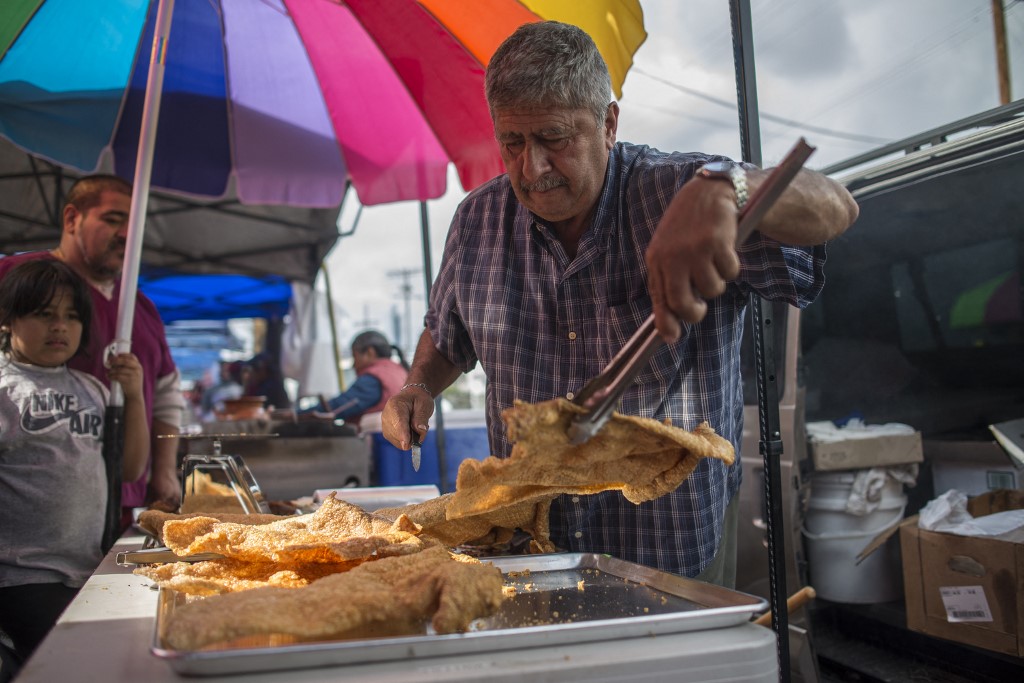Taking pleasure in the simpler things that bring a bit of comfort and happiness is a way of life in Costa Rica. One thing I have found is that just the sheer mention of chicharrones brings a great deal of happiness and a spark of life to a room.
When asking in the local pulperia what was their favorite way to eat chicharrones, it gathered a small crowd and sent random voices over the top of the little aisles. Everyone had their favorite way of eating them and what ensued was a lively conversation on all things chicharrones.
Everything from preparation, to the best places to eat them and even some digestion tips for those new to consuming the gluttonous pleasure were talked about. One of the biggest tips everyone agreed on was don’t drink water with your chicharrones but a nice cold cerveza or shot is the best way to wash them down.
Chicharrones are a food that you can find any time of the year, especially at the local bar while one of Costa Rica’s recent matches is being cheered on. It is also a traditional food that you will most definitely find at many family gatherings, fiestas, events, and especially during the Christmas and end of the year season.
They are so popular in Costa Rica that a whole fair was celebrated in honor of chicharrones, an annual Feria de Chicharron where once close to 4,000 kg of chicharrones were tirelessly prepared for consumption and celebration.
Chicharrones aren’t for everyone but those that do enjoy this carnal delight, most definitely relish in them shamelessly. They are a fried, fatty, cholesterol bomb that people love especially in Costa Rica and once you try one you may find out why they are so addicting.
Chicharron de carne has a toasted and crispy skin layer on the outside with moist and tender meat on the inside. Cooking them takes a bit of a skilled hand and some experience to safely prepare them. The seasoned pork meat typically pork belly or panzada de cerdo, is fried up and submerged in oil, or pork fat until they are a nice golden brown.
Salt water is then very slowly and cautiously added to the mixture to give it that extra crunch. However, some at home may skip this step and go straight to getting ready to serve them.
The length of time for cooking depends on the meat, with fresher and softer meat needing less time to finish. Most people will have their expert and trusted way to prepare these indulgent delights, regardless of how you end up making them, they are always best eaten warm.
Wrapped up in a traditional warm tortilla eaten on their own is one of the top ways to indulge. Another popular plate is with plenty of limes accompanied by an ice-cold Imperial, or Pilsen depending on who you ask. Fried yucca sticks and a Costa Rican style chimichurri salad and you have one of Costa Rica’s favorite dishes.
If you aren’t accustomed to cooking them and do not want to take on the risk of being burned from the mixing of water and oil, then your local carniceria or many sodas will have them on the menu.
Kept warm on display the chicharrones fill up the carniceria with their tantalizing aroma to those that fall in love with chicharrones. They don’t typically last too long throughout the day when they have them as people usually get a full bag to go.
Small pre-made bags can be found at the carniceria in their hard form, chicharrones de concha where they have been fried up in their fat and cooled off. They are not the same as the chicharrones de carne as they are pork skins and not meat. If you haven’t tried them in this form, and are a first timer then be aware as they can be quite firm and crackly when biting into them.
Some like to savor them just as they are out of the bag, hard with their fatty flavor. Others with a bit of lime squeezed onto them with a side of yucca and salad or cabbage slaw. Another nice use for them is to flavor your foods with the hard pork rinds especially slowly simmered in a pot full of beans. They soften up and are a nice treat, changing the daily occurrence of beans on your plate.
You may have even already tried chicharrones and not even realized it in a few of Costa Rica’s favorite and traditional dishes. Chifrijo is another restaurant bar food on almost all the menus in Costa Rica.
The name is the combination of chicharron and frijoles, the basis of the dish. Fried up pork meat or skins top off the bowl of rice, beans, pico de gallo (the country’s chimichurri), and usually some avocado and tortilla chips.
Or perhaps when waiting for the ferry in Puntarenas, you came across one of the many street food vendors selling the port town’s famous vigorones. The layered ice cream-shaped food held together by a banana leaf in a bag is lined with shredded cabbage salad, boiled yuca, and pork meat which pairs perfectly with the towering feast topped with chimichurri flavored with zesty lime.
Whether it be standing around and cooking them with one another, sharing with family during the holidays, or devouring them during a laid-back afternoon with friends, chicharrones are one of the many foods in Costa Rica that bring people together.
Memories and good moments are made over meals and that is what Costa Rica is well known for, its hospitality, the friendliness of the people, and many of their traditional foods.








